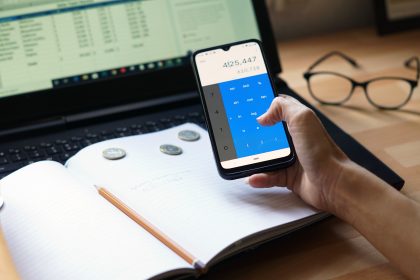Imagine shopping online and trying on clothes without leaving your couch. Or taking a virtual tour of a hotel before booking your vacation. This isn’t science fiction—it’s happening now, thanks to Augmented Reality (AR) and Virtual Reality (VR). These technologies are shaking up digital marketing, giving brands new ways to connect with customers. In this article, we’ll explore how AR and VR work, why they matter in marketing, and how they’re changing the way businesses reach people. We’ll also look at real examples and data to show their power.
What Are AR and VR?
Let’s break it down. AR adds digital elements—like images or information—to the real world. You’ve probably seen it in apps like Snapchat filters or Pokémon GO. It uses your phone or glasses to blend virtual things with what you see around you. VR, on the other hand, takes you to a completely made-up world. You need a headset, like the Oculus, to dive in and feel like you’re somewhere else—like walking through a virtual store or exploring a 3D game.
Both AR and VR are part of Extended Reality (XR), and they’re growing fast. According to Statista, the global AR and VR market is expected to reach $72.8 billion by 2029, growing at a compound annual growth rate (CAGR) of 7.42% from 2025 (Statista, 2023).
Why AR and VR Matter in Digital Marketing
Digital marketing is all about grabbing attention. With so many ads online, it’s hard for brands to get noticed. AR and VR solve this by creating immersive experiences—something regular ads can’t do. Instead of just watching a video, customers can interact with a product or step into a brand’s story. This makes them feel closer to the brand and more likely to buy.
Data supports this. A study found that AR campaigns have an average dwell time of 75 seconds, compared to just 2.5 seconds for traditional ads (Hackl & Wolfe, 2017). Plus, 70% of consumers say AR makes them more likely to buy (NielsenIQ, 2021). These numbers show how AR and VR keep people engaged longer and build stronger connections.
How Brands Use AR in Marketing
AR is a favorite because it’s easy to use—no fancy headsets needed, just a smartphone. Here’s how some brands are making it work:
1. Virtual Try-Ons
Ever wondered how glasses or lipstick would look on you? AR lets you find out. Brands like Warby Parker and Sephora use AR apps so customers can “try on” products at home. Warby Parker’s app shows how glasses fit your face, while Sephora’s Virtual Artist tool previews makeup. This cuts out the guesswork and makes buying fun.
2. Product Previews
Furniture shopping online can be tricky—will that couch fit? Ikea solved this with its Ikea Place app, which uses AR to place virtual furniture in your space. You point your phone, pick a chair, and see how it looks. It’s practical and boosts confidence in buying.
3. Interactive Ads
Social media loves AR too. Brands create filters on Instagram and Snapchat to promote products. For example, Gucci made an AR lens on Snapchat to “try on” shoes. It’s shareable, fun, and spreads the word fast.
How Brands Use VR in Marketing
VR pulls customers into a full digital world. It’s less common than AR because it needs headsets, but it’s powerful for storytelling. Here’s how it’s used:
1. Virtual Tours
Travel companies like Thomas Cook use VR to let people “visit” destinations before booking. Imagine walking through a Hawaiian resort with a headset. VR users in the U.S. are expected to hit 91.3 million by 2028 (eMarketer, 2024).
2. Immersive Brand Stories
Some brands use VR to tell their story in a way that sticks. TOMS Shoes created a VR film showing their team giving shoes to kids in Peru. Customers felt part of the mission, building loyalty.
3. Virtual Events
During the pandemic, VR became a lifeline for events. John Legend hosted a virtual concert with Wave, drawing over 500,000 attendees (Billboard, 2020). Brands can use VR for product launches or trade shows, reaching people worldwide.
The Benefits of AR and VR in Marketing
Why are brands jumping on this trend? Here are the big wins:
- Better Engagement: People spend more time with AR and VR than flat ads (Hackl & Wolfe, 2017).
- Stronger Emotions: VR makes people feel something. A PwC study showed VR users feel 4 times more emotionally connected than traditional learners (PwC, 2020).
- Stand Out: AR and VR make brands memorable in a sea of ads.
- More Sales: AR can boost conversion rates by 40% (NielsenIQ, 2021).
Challenges to Watch Out For
AR and VR aren’t perfect. Here’s what brands need to think about:
- Cost: Building AR apps or VR experiences isn’t cheap. Small businesses might struggle.
- Tech Needs: VR needs headsets, which not everyone has. AR relies on decent phones and internet.
- Learning Curve: Some customers might not know how to use these tools yet.
Despite these hurdles, the market is growing. The AR market alone could hit $100 billion by 2025 (Statista, 2023).
Real Examples That Worked
Here are some brands that nailed it:
- Lululemon: Used AR for a virtual workout space, blending shopping with exercise.
- The New York Times: Their VR film “The Displaced” told a story of kids in war zones, building a deeper bond with readers.
- Nike: The “Create with Air Max” AR campaign let fans design virtual sneakers, sparking buzz.
What’s Next for AR and VR in Marketing?
The future is bright. By 2028, U.S. AR users will reach 116 million, and VR users will hit 91.3 million (eMarketer, 2024). Here’s what’s coming:
- More Accessibility: Cheaper headsets and better phones will make VR and AR common.
- AI Boost: Artificial Intelligence will personalize AR/VR experiences.
- Social Media Growth: Platforms like Meta are building the “metaverse”—virtual worlds for brands.
Experts predict AR and VR could add $1.5 trillion to the global economy by 2030 (PwC, 2022).
Tips for Brands Getting Started
Ready to try AR or VR? Here’s how:
- Start Small: Test an AR filter or a simple VR demo.
- Know Your Audience: Younger folks (16-24) love this tech—63% are excited about it (NielsenIQ, 2021).
- Track Results: Use tools like Google Analytics to see what works.
Note
AR and VR are revolutionizing digital marketing. They create fun, memorable moments that turn browsers into buyers. With the market growing fast and tech improving, now’s the time for businesses to jump in. Whether it’s a virtual try-on or a 3D adventure, AR and VR are changing the game for good.
References
Billboard. (2020, August 27). John Legend performs in virtual reality with Wave, drawing 500,000 attendees. https://www.billboard.com
eMarketer. (2024). AR and VR users in the U.S.: Projections for 2028. https://www.emarketer.com
Hackl, C., & Wolfe, S. (2017). Marketing new realities: An introduction to VR & AR marketing, branding, and communications. Meraki Press.
NielsenIQ. (2021). Consumer insights on augmented reality in retail. https://nielseniq.com
PwC. (2020). The effectiveness of virtual reality in soft skills training. https://www.pwc.com
PwC. (2022). Seeing is believing: How VR and AR will transform business and the economy. https://www.pwc.com
Statista. (2023). Augmented reality (AR) and virtual reality (VR) market size worldwide from 2021 to 2029. https://www.statista.com















